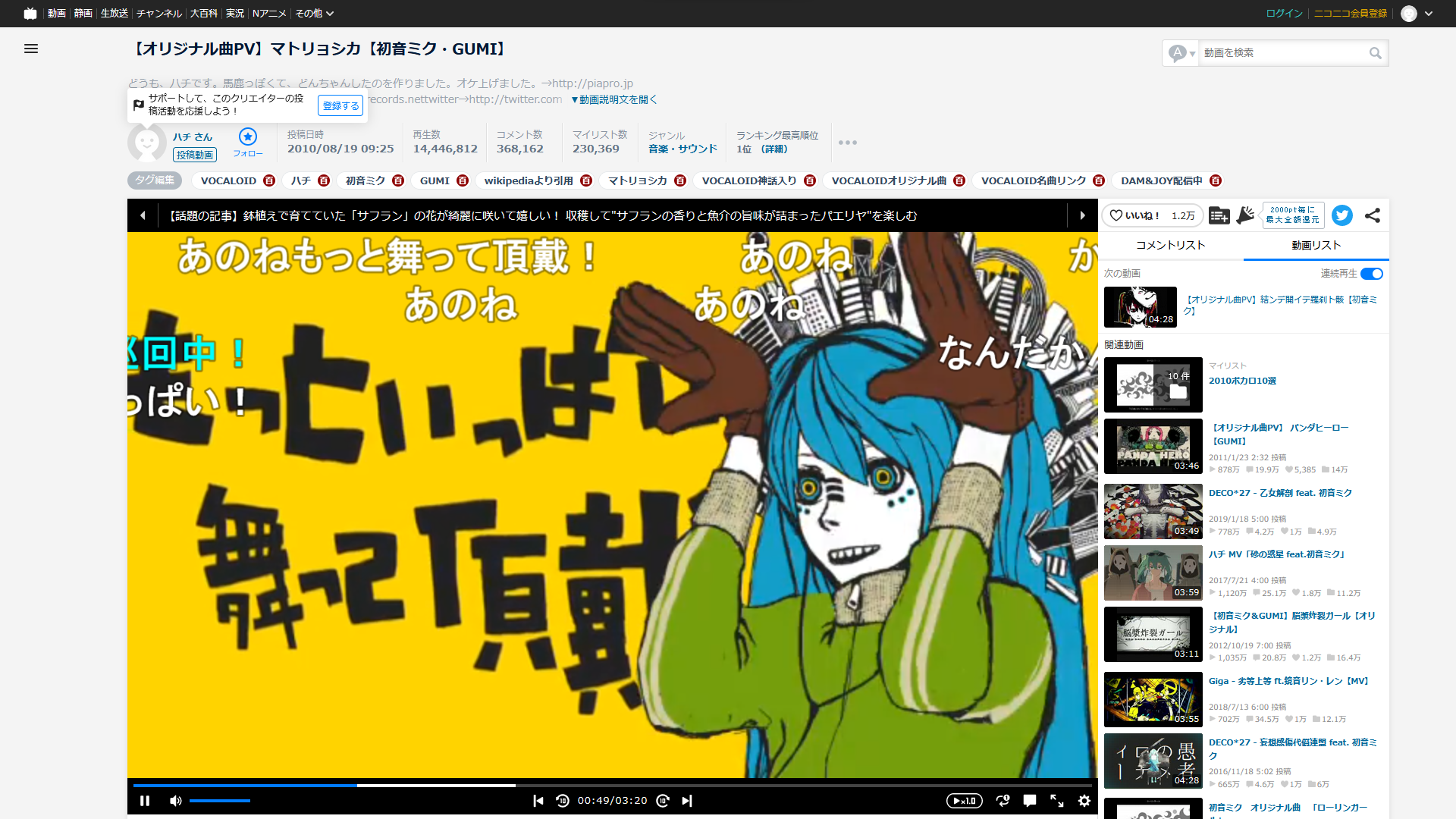Ryan Hu (11) | STAFF REPORTER
Civilisation’s switch to digital technology has represented one of the greatest technological leaps in human history, comparable to when humanity first decided to pursue agriculture. A result of the current “Information Age” is social media, which has allowed people to connect with each other and form communities through the Internet. Together with the accessibility of computers and digital audio software, it is now easier than ever to create and share information.
One of the most unique creations of social media is Vocaloid music, based around a voice-synthesis software capable of replicating human singing. The August 2007 release of Vocaloid 2 and its de facto mascot character, a virtual singer named Hatsune Miku, sparked a Vocaloid boom that would last for the next half-decade.
A key part of Vocaloid’s early success were the new social media sites that allowed for the formation of online communities. In particular, the video-sharing site “Nico Nico” greatly contributed to the adoption of Vocaloid. While Vocaloid itself was only a tool for music production, Nico Nico provided a place for Vocaloid fans to connect and share works for free.
Furthermore, the relationship between Vocaloid and Nico Nico would result in the development of a unique, online community of visual artists, musicians and producers. The community’s social media roots gave it values like collaboration and anonymity, which are much more easily achieved through social media than through traditional means.
Due to the capabilities of the Vocaloid software, as well Vocaloid’s amateur community, Vocaloid music would also come to embody creativity and song-writing. In particular, the anonymity of Nico Nico encouraged creators to share increasingly creative and personal music, and the Vocaloid software allowed creators to focus on song-writing instead of singing.
Another way Nico Nico influenced the Vocaloid community was through video. Nico Nico, being a video sharing site similar to YouTube, encouraged users to create music videos based on their songs. While many videos were produced and animated by the same person who made the song, many were also produced by fans of their music, with both providing analysis and extra story for the song. Overtime, these animated videos became the preferred way to listen to Vocaloid music, as opposed to traditional formats like albums.
While these qualities would mostly yield hit-or-miss results, the Vocaloid community would eventually come to influence music beyond its Nico Nico origins. Today, dozens of music producers, visual artists and cover singers who started with Vocaloid have now moved on, becoming professional singers and animators. The style of animated music video synonymous with Vocaloid has also been adopted outside of Vocaloid. Vocaloid even has its own concerts, which attract tens of thousands of people every year.
The success of Vocaloid has carried many implications for music. It has proven that through social media, music can be distributed extremely effectively. For Vocaloid, social media was necessary in its success. It has also proven that many people are willing to take a chance with new types of music, as long as the music is unique or interesting, or has a unique music video.
However, Vocaloid is not the only type of music exist solely on social media. Electronic music genres and rave culture of the 1990s have had a renaissance in the past decade, with genres like jungle and French house providing a retro framework for new genres of music.
Similar to Vocaloid, social media has played a vital role in allowing these new forms of music to exist. Many of their songs are inspired by genres that now only exist on ancient YouTube vinyl and cassette rips, and simply would not have found a big-enough audience if not through social media.
What Vocaloid and Bandcamp producers have in common is their symbiotic relationship with social media. Their creation, evolution and relative success have been entirely dependent on social media. Without social media, these genres would never even have been created. In turn, social media has allowed these genres to grow in ways that would not be possible outside of the Internet, and have made music production more accessible than ever.
15 years after the release of Vocaloid 2, the success of Vocaloid is easy to understate. It has yet to break out of Japan, where it was first conceived. However, by all accounts, Vocaloid has succeeded in its original mission to provide broke music producers with a virtual singer.
Not only that, but it has left an indelible mark on the wider Japanese music scene. Through only computer software and a couple websites, an entire generation of music producers, musicians and singers was created, bringing the Vocaloid style into the mainstream.
While Vocaloid may have declined in the past ten years, it will certainly not be going away any time soon. As long as Vocaloid exists, it will forever be a reminder of the mostly-intangible, positive aspects of social media.



